 W
WSpanish claims to the West Coast of North America date to the papal bull of 1493, and the Treaty of Tordesillas. In 1513, this claim was reinforced by Spanish explorer Vasco Núñez de Balboa, the first European to sight the Pacific Ocean, when he claimed all lands adjoining this ocean for the Spanish Crown. Spain only started to colonize the claimed territory north of present-day Mexico in the 18th century, when it settled the northern coast of Las Californias (California).
 W
WAdventure was built by the crew of Captain Robert Gray on his second voyage in the maritime fur trade to the Northwest Coast of North America. The 45-ton sloop was built to allow the trading venture to access smaller inlets the Columbia could not reach. At the end of his second voyage Gray sold the ship to the Spanish Navy. It was renamed Orcacitas and served the Naval Department of San Blas for some years.
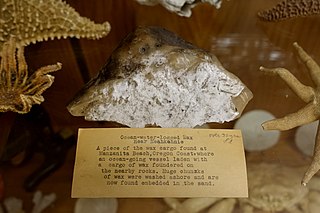 W
WThe beeswax wreck is an as-yet-undiscovered shipwreck somewhere off the coast of the U.S. state of Oregon, near Neahkahnie Mountain and the mouth of the Nehalem River in Tillamook County. The ship, thought to be a Spanish Manila galleon that was wrecked in the late-1600s, was carrying a large cargo of beeswax, lumps of which have been found scattered along Oregon's north coast for at least two centuries.
 W
WThe Boca de Quadra is a bay extending southwest from the Keta River to Revillagigedo Channel in Southeastern Alaska.
 W
WJuan Francisco de la Bodega y Quadra was a Spanish naval officer born in Lima, Peru. Assigned to the Pacific coast Spanish Naval Department base at San Blas, in the Viceroyalty of New Spain, this navigator explored the Northwest Coast of North America as far north as present day Alaska.
 W
WAntonio María de Bucareli y Ursúa was a Spanish military officer, governor of Cuba, and Viceroy of New Spain (1771–1779) during the time of Spanish colonization of California. He was Knight of Justice of the Order of Malta.
 W
WJosé de Bustamante y Guerra, sometimes referred to simply as Bustamante, was a Spanish naval officer, explorer, and politician.
 W
WJosé Cardero was a Spanish draughtsman and artist. He is most remembered for his work on the expedition of Alessandro Malaspina and the related expedition of Dionisio Alcalá Galiano. During the Galiano voyage Cordero Channel was named in his honor. Other places in British Columbia were later named in his honor as well, including Dibuxante Point, "dibuxante" being Spanish for "draughtsman".
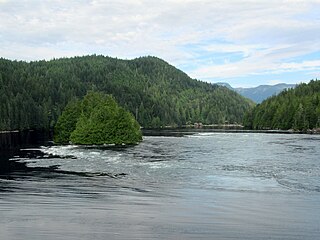 W
WCordero Channel is a strait in British Columbia, Canada, located between the mainland and Vancouver Island, among the Discovery Islands north of the Strait of Georgia. Cordero Channel runs north of Sonora Island, East Thurlow Island, and part of West Thurlow Island. Its eastern end connects to the mouth of Bute Inlet and to Calm Channel, at Stuart Island. Its west end is marked by the mouth of Loughborough Inlet, beyond which the channel is called Chancellor Channel, which continues west to Johnstone Strait.
 W
WCortes Island is an island in the Discovery Islands archipelago on the coast of British Columbia, Canada. The island is 25 km (15.5 mi) long, 13 km (8.1 mi) wide, and 130 km2 (50 sq mi) in area. It has a population of 1,035 permanent residents. Cortes Island lies within Electoral Area B of the Strathcona Regional District, which provides water and sewerage systems, fire protection, land use planning, parks, recreation, and emergency response.
 W
WJoan Crespí or Juan Crespí was a Franciscan missionary and explorer of Las Californias.
 W
WThe Descubierta and Atrevida were twin corvettes of the Spanish Navy, custom-designed as identical special exploration and scientific research vessels. Both ships were built at the same time for the Malaspina Expedition. Under the command of Alessandro Malaspina (Descubierta) and José de Bustamante y Guerra (Atrevida) the two vessels sailed from Spain to the Pacific Ocean, conducting a thorough examination of the internal politics of the American Spanish Empire and the Philippines. They explored the coast of Alaska and worked to reinforce Spain's claim to the Pacific Northwest in the aftermath of the Nootka Crisis. After crossing the Pacific Ocean, the government in the Philippines examined. Exploration and diplomatic reconnaissance followed, with stops in China, New Zealand, Australia, and Tonga.
 W
WEstevan Point is a lighthouse located on the headland of the same name on the Hesquiat Peninsula on the west coast of Vancouver Island, Canada.
 W
WManuel Antonio Flórez Maldonado Martínez Ángulo y Bodquín was a general in the Spanish navy and viceroy of New Granada and New Spain.
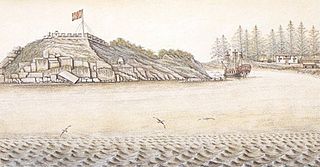 W
WFort San Miguel was a Spanish fortification at Yuquot on Nootka Island, just west of north-central Vancouver Island. It protected the Spanish settlement, called Santa Cruz de Nuca, the first colony in British Columbia.
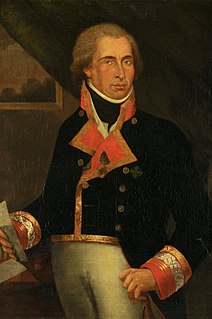 W
WDionisio Alcalá Galiano was a Spanish naval officer, cartographer, and explorer. He mapped various coastlines in Europe and the Americas with unprecedented accuracy using new technology such as chronometers. He commanded an expedition that explored and mapped the Strait of Juan de Fuca and the Strait of Georgia, and made the first European circumnavigation of Vancouver Island. He reached the rank of brigadier and died during the Battle of Trafalgar.
Gil Island is an island on the North Coast of British Columbia, Canada, located on the west side of Whale Channel in the entrance to Douglas Channel, one of the main coastal inlets, on the route of the Inside Passage between Pitt Island and Princess Royal Island. It is 26 km long, with a width ranging from 6 to 13 km, and an area of 231 km². The only named summit on the mountainous island is Mount Gil, which faces the opening of Douglas Channel.
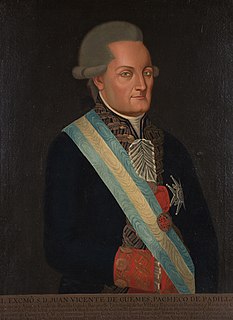 W
WJuan Vicente de Güemes Padilla Horcasitas y Aguayo, 2nd Count of Revillagigedo was a Spanish military officer and viceroy of New Spain from October 17, 1789 to July 11, 1794. He is known as a great reformer and one of the finest administrators of the Spanish colonial era—perhaps the last able viceroy of New Spain.
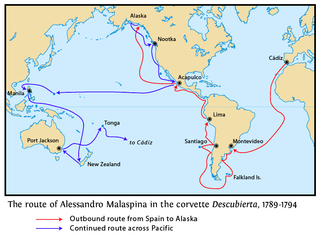 W
WThe Malaspina Expedition (1789–1794) was a five-year maritime scientific exploration commanded by Alessandro Malaspina and José de Bustamante y Guerra. Although the expedition receives its name from Malaspina, he always insisted on giving Bustamante an equal share of command. Bustamante however acknowledged Malaspina as the "head of the expedition" since the beginning.
 W
WAlejandro Malaspina was a Tuscan explorer who spent most of his life as a Spanish naval officer. Under a Spanish royal commission, he undertook a voyage around the world from 1786 to 1788, then, from 1789 to 1794, a scientific expedition throughout the Pacific Ocean, exploring and mapping much of the west coast of the Americas from Cape Horn to the Gulf of Alaska, crossing to Guam and the Philippines, and stopping in New Zealand, Australia, and Tonga.
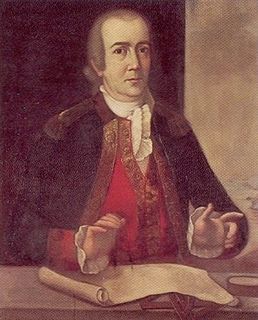 W
WEsteban José Martínez Fernández y Martínez de la Sierra, or simply José Esteban Martínez (1742–1798) was a Spanish navigator and explorer, native of Seville. He was a key figure in the Spanish Exploration of the Pacific Northwest.
 W
WThe Mexicana was a topsail schooner built in 1791 by the Spanish Navy at San Blas, New Spain. It was nearly identical to the Sutil, also built at San Blas later in 1791. Both vessels were built for exploring the newly discovered Strait of Georgia, carried out in 1792 under Dionisio Alcalá Galiano, on the Sutil, and Cayetano Valdés y Flores, on the Mexicana. During this voyage the two Spanish vessels encountered the two British vessels under George Vancouver, HMS Discovery and Chatham, which were also engaged in exploring the Strait of Georgia. The two expeditions cooperated in surveying the complex channels between the Strait of Georgia and Queen Charlotte Strait, in the process proving the insularity of Vancouver Island. After this first voyage the Mexicana continued to serve the San Blas Naval Department, making various voyages to Alta California and the Pacific Northwest coast.
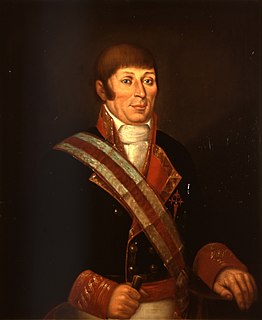 W
WFrancisco Antonio Mourelle de la Rúa was a Spanish naval officer and explorer from Galicia serving the Spanish crown. He was born in 1750 at San Adrián de Corme, near A Coruña, Galicia.
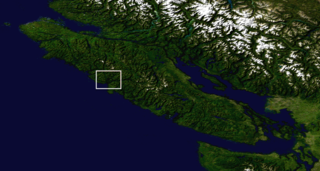 W
WThe Nootka Crisis, also known as the Spanish Armament, was an international incident and political dispute between the Spanish Empire, the Kingdom of Great Britain, and the fledgling United States of America triggered by a series of events that took place during the summer of 1789 at the Spanish outpost Santa Cruz de Nuca, in Nootka Sound, present-day British Columbia, Canada. The commander of the outpost, Jose Esteban Martínez, seized some British commercial ships which had come for the maritime fur trade and to build a permanent post at Nootka Sound. Public outcry in England led to the mobilization of the British and Spanish navies and the possibility of war. Both sides called upon allies, and although Spain's key ally France also mobilized their navy, they soon announced they would not go to war. Without French help Spain had little hope against the allied forces of the British and the Dutch, resulting in Spain seeking a diplomatic solution and making concessions.
 W
WNootka Sound is a sound of the Pacific Ocean on the rugged west coast of Vancouver Island, in the Pacific Northwest, historically known as King George's Sound. It separates Vancouver Island and Nootka Island., part of the Canadian province of British Columbia. It played a historically important role in the maritime fur trade.
 W
WOgden Channel is a strait on the North Coast of British Columbia, Canada, located between Porcher Island (NW) and Pitt Island (SE). The channel complex is part of the Alexander terrane, and dates between the late silurian and early devonian.
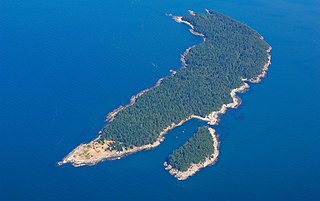 W
WPatos Island is a small island in the San Juan Islands of the U.S. state of Washington. Since 1893, it has been home to the Patos Island Lighthouse, guiding vessels through Boundary Pass between Canada and the United States. The name comes from the Spanish pato, meaning "duck," which was given to the island in 1792 by Commander Dionisio Alcalá Galiano of the Sutil and Captain Cayetano Valdés y Flores of the Mexicana.
 W
WPort Renfrew is a small unincorporated community located on the south shore of Port San Juan, an inlet on the west coast of Vancouver Island in British Columbia, Canada. Port Renfrew has a population of 144 and has been touted as "the Tall Tree Capital of Canada".
 W
WPort San Juan is an inlet along the Pacific coast of Vancouver Island in British Columbia, Canada. It was formed from the San Juan and Leech River faults which flank the northern and southern slopes of the San Juan Valley. The San Juan and Gordon rivers empty into the inlet from the northeast.
 W
WManuel Quimper Benítez del Pino was a Spanish Peruvian explorer, cartographer, naval officer, and colonial official. He participated in charting the Strait of Juan de Fuca and the Sandwich Islands in the late 18th century. He was later appointed a colonial governor in his native Peru at the beginning of the fight for independence there. He retired to Spain, but was able to return to Peru where he served as a naval officer in the new republic and pursued a literary career, publishing over 20 books about his experiences before his death there in Lima.
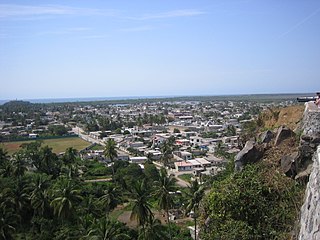 W
WSan Blas is both a municipality and municipal seat located on the Pacific coast of Mexico in Nayarit.
 W
WThe San Christoval Range is a 50 km long, jagged mountain range located on the west coast of Moresby Island, British Columbia, Canada. It is the only lineal mountain range in the Haida Gwaii and the highest peaks are just above 1000 m. The mountain range was named by Juan José Pérez Hernández in 1774.
 W
WThe San Juan River is a river that flows from east to west through southern Vancouver Island in British Columbia, Canada. The river originates in the Seymour Range, flows westward through the San Juan Valley to Port San Juan at Port Renfrew.
 W
WThe San Juan Valley is a small valley located in the Capital Regional District of Vancouver Island in British Columbia, Canada.
 W
WSanta Cruz de Nuca, was a Spanish colonial fort and settlement and the first European colony in British Columbia. The settlement was founded in 1789 and abandoned in 1795, with its far northerly position making it the "high-water mark" of verified Northerly Spanish settlement along the North American West coast. The colony was first established with the Spanish aim of securing the entire West coast of the continent from Vancouver island southwards, for the Spanish crown.
 W
WSanta Gertrudis-Boca del Infierno Provincial Park, legally Santa-Boca Provincial Park, is a provincial park on Nootka Island in British Columbia, Canada. It was established on 30 April 1996 to protect and Santa Gertrudis Cove and Boca del Infierno Bay, which are located on the southeastern shore of Nootka Island.
 W
WSonora Island is one of the outer islands of the Discovery Islands of British Columbia, Canada. It is located at the eastern end of Johnstone Strait and the northern end of Discovery Passage within Electoral Area C of the Strathcona Regional District.
 W
WSutil was a brig-rigged schooner built in 1791 by the Spanish Navy at San Blas, New Spain. It was nearly identical to Mexicana, also built at San Blas in 1791. Both vessels were built for exploring the newly discovered Strait of Georgia, carried out in 1792 under Dionisio Alcalá Galiano, on Sutil, and Cayetano Valdés y Flores, on Mexicana. During this voyage the two Spanish vessels encountered the two British vessels under George Vancouver, HMS Discovery and HMS Chatham, which were also engaged in exploring the Strait of Georgia. The two expeditions cooperated in surveying the complex channels between the Strait of Georgia and Queen Charlotte Strait, in the process proving the insularity of Vancouver Island. After this first voyage Sutil continued to serve the San Blas Naval Department, making various voyages to Alta California and the Pacific Northwest coast.
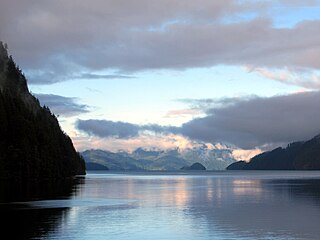 W
WToba Inlet is one of the lesser, but still principal, inlets of the British Columbia Coast. It is fourth in the series north from the 49th parallel which begins with Burrard Inlet, which is the harbour for the city of Vancouver. Between it and Jervis Inlet to its east, however, there is a freshwater fjord, Powell Lake, which has been augmented by a small hydro project to supply power to the large pulp mill at Powell River, the principal town of the Malaspina Peninsula of the upper Sunshine Coast. Klahoose 1 Reserve, of the Klahoose First Nation is at the mouth of Toba River at the Head of Toba Inlet. Toba Inlet and the Toba Valley is home to many grizzly bears.
 W
WVicente Tofiño de San Miguel y Wanderiales was a Spanish navigator and cosmographer.
 W
WValdes Island is one of the Gulf Islands located in the Strait of Georgia, British Columbia, Canada. It is across Porlier Pass from Galiano Island, which lies to the southeast. It has an area of 23 square kilometres, and is 1.6 kilometres wide by 16 kilometres in length. The island is popular with kayakers, boaters and has historically been the site of several human settlements.
 W
WCayetano Valdés y Flores Bazán (1767–1835) was a commander of the Spanish Navy, explorer, and captain general who served in the French Revolutionary and Napoleonic Wars, fighting for both sides at different times due to the changing fortunes of Spain in the conflict. He took part in a number of naval battles, including the Great Siege of Gibraltar, the Battle of Cape St Vincent, and the Battle of Trafalgar. He was an explorer, most notable in the Pacific Northwest, where he and Dionisio Alcalá Galiano conducted the first circumnavigation of Vancouver Island, in partial cooperation with George Vancouver. Over his long career he achieved the highest ranks in the Spanish Navy, eventually being named Captain General of Cadiz and Captain General of the Spanish Navy.